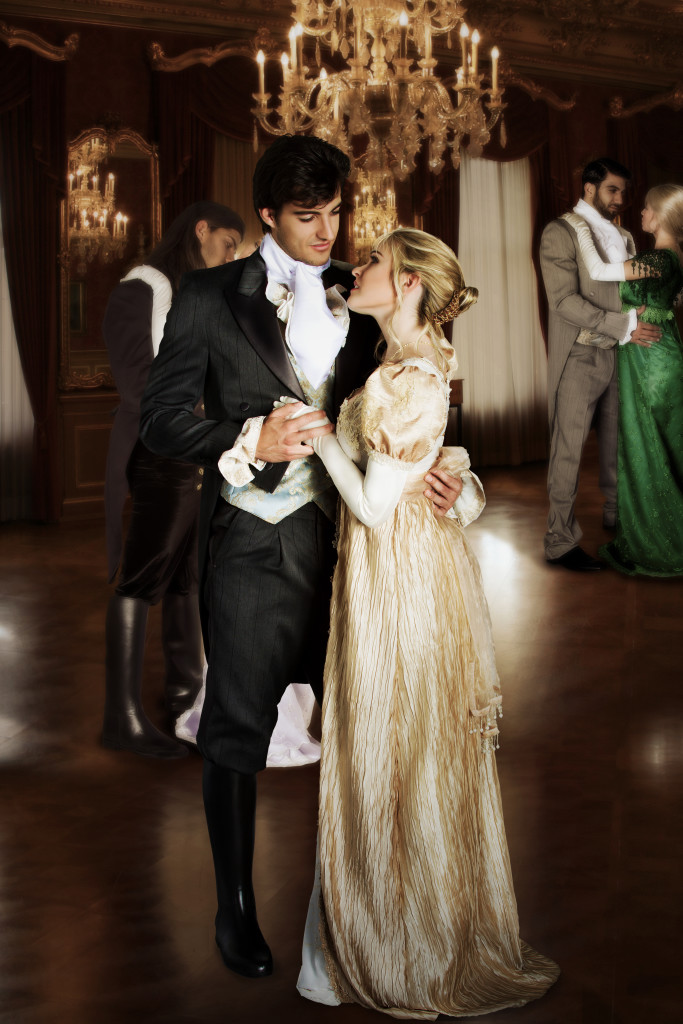
As an American, I once found English titles as puzzling as they were intriguing. Even after ten years of research, and thirteen published titles, I still double check my uses before I introduce or address a Regency nobleman. Here is a quick and easy guide to help you understand them, too.
TITLES:
The titles of duke and marquess are usually territorial, such as Earl of Tarrington. Though the titles of earl, viscount, and baron are most often associated with a territory, they can also be based on a family name, i.e. Viscount Amesbury. Some very old titles do not use “of” in the title, so they could be simply Earl Tarrington. A baron’s wife is not typically called baroness, though she is addressed as Lady Titlename–only a woman who is a baroness in her own right uses that title.
The British peerage, in order of precedence is:
Duke whose wife is a duchess (the Duke/Duchess of Placename, addressed as Your Grace). It is also correct so say simply, “duke” or “duchess” but probably only by a peer or friend.
Marquis, later the spelling changed to Marquess to sound more English and less French, (marquis is pronounced mar-kwiss) whose wife is a marchioness (the Marquess/Marchioness of Placename, addressed as Lord/Lady Placename)
Earl whose wife is a countess (the Earl/Countess of Titlename, addressed as Lord/Lady Titlename
Lower ranking titles:
Viscount whose wife is a viscountess (the Viscount/Viscountess [of] Titlename, addressed as Lord/Lady Titlename.
Baron whose wife is a baroness (Baron/Baroness Titlename, addressed as Lord/Lady Titlename.
The next two ranks are not peers, meaning they do not sit in the House of Lords:
Baronet (addressed as Sir Firstname, his wife as Lady Surname)
Knight (addressed as Sir Firstname, his wife as Lady Surname; a knighted female is addressed as Dame Firstname, her husband as Mr. Surname, because he does not share the disctinction of his wife)
Baronet title is hereditary but a knighthood is not inherited.
Does that help? When in doubt, resorting to “my lord” or “my lady” will not usually get you in trouble.
For more details on each rank as well as correct forms of address, I recommend these sites:
http://www.debretts.com/forms-of-address/titles.aspx
http://laura.chinet.com//html/titles02.html

Thanks! I’m venturing into a story that will have titled guests as characters. This is a great resource.
Thanks for your informative post. It always spoils Historical Romances for me when the author gets the titles wrong. The biggest no-no is to to address a Lady as Lady first name who doesn’t have a title in her own right i.e. she got it through marriage and not from being a daughter of an Earl, Marquess or Duke. For example our Miss Caroline Jones married the Earl of Stanbridge (just made up names). She is Lady Stanbridge – NEVER Lady Caroline. Another howler that I read recently was addressing a Duchess, say the Duchess of Placename as Lady Placename or Your Ladyship. A Duchess is always Your Grace/Her Grace unless addressed as Duchess by equals as you state above. I guess it seems rather petty but there is the correct way of doing things and it’s nice to see you setting the record straight.